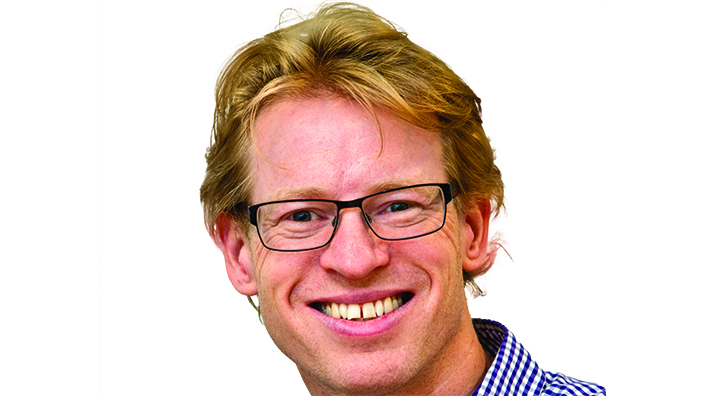Articles
But, as chief engineer on the Geological Disposal Facility (GDF) programme, he’s having to think about the flow of time in a whole new way. That’s because when engineers search for ways to dispose of a nation’s nuclear waste the timeline shifts into tens or hundreds of thousands of years. Sometimes it leads them to the impossibly uncertain world that will exist a million years from now.
Paul joined Nuclear Waste Services, which is responsible for designing, building and running the GDF, about a year ago. He’d always been fascinated by geology and felt that his engineering experience was a great fit. Paul’s moral compass led him towards a “do good” environmental project, which aims to deal with more than 60 years’ worth of radioactive waste (generated by power plants, hospitals, the military and wider industry) in the safest way possible. Success for the GDF will also mean safer solutions for future nuclear waste.
Tombs for waste
What’s being planned is a network of underground vaults and tunnels, which will serve as tombs for radioactive waste. The chambers will be dug anywhere between 200m and a kilometre below the surface. They’re being designed to hold permanently 750,000m³ of waste.
The plan is for rocks to lock in the waste – much like the earth locks in pockets of oil or gas – and deal with it over the millennia.
In April, the UK government released an energy plan, which envisages up to eight nuclear reactors being built within the decade. It also predicts that by 2050 a quarter of Great Britain’s energy demand will be met by nuclear power. That means more waste, and all the more reason why Paul’s organisation needs to find the right site to build a disposal facility. Once that’s done, formal engineering plans will be drawn up.
For engineers, thinking ahead is part of the job. A good road should last decades. A well-built house can endure centuries. But the immense timescale involved in burying nuclear waste creates all kinds of unexplored challenges. “In the normal world of engineering, we don’t deal with these kinds of timescales,” Paul explains. “We must manage the transformation of waste through time. It’s a big technical challenge. It forces us to think differently. When you’re in geological time, major surface processes, like ice ages, become important.”

Paul Shipley
All this is mixed with high levels of uncertainty. Both about the site that will eventually be chosen – and how that will affect the final design – and the kind of waste that will emerge from new reactors. This makes choosing materials to transport or seal in waste difficult.
And, finally, there’s the tall hurdle of demonstrating engineering safety to the regulatory authorities and the public. “The UK has benefited from nuclear for many years,” says Paul. “Now there’s a legacy. And it won’t go away on its own. There’s a moral need to deal with that legacy and not pass it from generation to generation.”
Tough challenge
For engineers, there’s no greater magnet than a daunting challenge. And Paul believes that young engineers who get involved in this field will find the search for solutions fascinating. How will the vaults and tunnels be spaced out, and reinforced, to handle hot nuclear waste? What’s the safest way to transport 300,000 or more radioactive packages currently locked away in surface storage containers? What lies at the intersection of human engineering and a planet’s geological processes?
Paul believes that, after decades of planning and preparing, the GDF project is gaining momentum, being talked about in public as it accelerates towards the build. He’s confident that, as time goes by, it will be widely accepted as a safe, proven solution and a fascinating opportunity for engineers. For now, he’s focusing on finding a suitable site. And getting ready to celebrate his silver wedding anniversary.
Is burying nuclear waste the best option?
Nuclear nations have agreed for decades that geological disposal is the safest, most responsible way to deal with radioactive waste. Various countries are at different stages of building their own GDFs. Previous ideas, now discarded, included burying waste at sea or beneath the ocean floor.
A question that sometimes captures people’s imagination is why can’t the waste be taken off the planet? Paul says the answer comes down to safety concerns (imagine an accident taking place in the atmosphere) and the sheer volume of waste that needs to be dealt with (given how little cargo today’s rockets can carry).
Become a net zero expert at Sustainability in Engineering (26-30 September), part of the Engineering Futures webinar series. Register for FREE now.
Content published by Professional Engineering does not necessarily represent the views of the Institution of Mechanical Engineers.